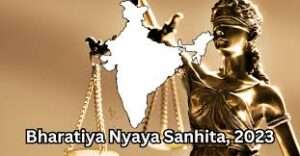
This article has been written by Tadepalli Aditya Kamal (pursuing 3rd year BBA LLB in KLE Law College, Bengaluru)

Introduction
The globalization of markets has made it necessary to establish consistent legal principles that govern business transactions. Capital now seeks the best opportunities worldwide. With the rise of digital technology and interconnected computer networks, transferring money across borders has become as simple as clicking a button. In modern society, significant business deals occur between companies operating in different countries. When a company faces financial collapse, it often needs to coordinate insolvency proceedings that span multiple jurisdictions where it operates or holds assets and debts from various third parties. To meet this demand, advanced economies have established comprehensive laws to manage insolvency cases that involve multiple countries.
The Insolvency and Bankruptcy Bill of 2015, as suggested by the Bankruptcy Law Reforms Committee (BLRC) Report 1, initially lacked provisions to handle matters of cross-border insolvency. However, during the assessment of the Bill by the Joint Committee of Parliament, there was a recognized need to address cross-border insolvency concerns.
Due to the absence of suitable support systems to manage such situations, the original Insolvency and Bankruptcy Bill of 2015 did not incorporate provisions for cross-border issues during its introduction in the Lok Sabha’s winter session of 2015. The essential support systems required were well-functioning bankruptcy courts, capable resolution professionals, effective information utilities, and seamless communication among bankruptcy courts across different jurisdictions. To bridge this gap, the Joint Committee of Parliament, which scrutinized the 2015 Insolvency and Bankruptcy Bill, recommended the addition of two sections.
These provisions were included as interim measures and were passed as the Insolvency and Bankruptcy Code of 2016 (Code) to address cross-border insolvency concerns. However, it’s worth noting that both these provisions are inadequate in providing a comprehensive framework to effectively manage issues related to cross-border insolvency.
UNCITRAL Model Law On Cross-Border Insolvency
The UNCITRAL Model Law on Cross-Border Insolvency (MLCBI), proposed by the United Nations Commission on International Trade Law, embraces the principles of Modified Universalism and enjoys widespread approval within the global community. This framework is widely regarded as the most accepted and effective approach to address cross-border insolvency matters while minimizing interference with the internal insolvency and bankruptcy laws of each country.
The MLCBI encompasses standardized regulations that align with the key aspects of modified universalism. This includes provisions related to the recognition of both main and non-main proceedings, a variety of measures that should be extended to foreign proceedings, support for foreign courts and representatives, and mechanisms aimed at fostering cooperation and coordination among courts and insolvency representatives.
In essence, the MLCBI serves as a comprehensive blueprint for managing cross-border insolvency challenges, ensuring a balanced approach that upholds international cooperation while respecting the autonomy of individual countries’ insolvency and bankruptcy frameworks. The Model Law enables the recognition of foreign insolvency proceedings and outlines the associated outcomes. It grants foreign representatives access to the legal system of the adopting nation. This enables these representatives to request a temporary pause, while the local courts determine the necessary cooperation and relief for a successful resolution of the insolvency case.
The law facilitates improved collaboration between local courts and foreign courts and representatives involved in insolvency cases. It empowers local courts and administrators to seek international assistance, establishes court jurisdiction, and sets rules for managing cases where insolvency proceedings occur simultaneously in both the adopting country and a foreign country. Additionally, it establishes guidelines for coordinating relief provided in the adopting country to support multiple insolvency proceedings abroad involving the same debtor.
The Model Law encompasses four main aspects:
- Granting foreign insolvency representatives access to the Adjudicating Authority (AA) and permitting Resolution Professionals (RPs) and Liquidators under the Code to seek external support;
- Acknowledging specific orders from foreign courts;
- Providing support for foreign proceedings; and
- Facilitating collaboration among courts in countries where the debtor’s assets are situated and managing simultaneous insolvency proceedings.
Draft Part Z
In order to address the limitations within the existing cross-border insolvency framework or its absence, India has introduced a set of preliminary guidelines containing a dedicated section referred to as Part Z (Draft Chapter) concerning cross-border insolvency. The foundation of the Draft is derived from the Model Law. The recommendations for these Draft guidelines were put forth by the ILC in their report submitted on October 16, 2018. Following the recognition of the necessity for adopting the Model Law, a process of harmonizing the provisions of the law with India’s legal framework began, resulting in the creation of Draft Part Z. The development of this subordinate legislation was suggested by the Cross-border Insolvency Rules/Regulation Committee (CBIRC).
Key features of the Draft Chapter include:
- Applicability Limited to Corporate Debtors: The Draft Chapter exclusively pertains to corporate debtors and does not extend its scope to personal insolvency or individual debtors.
- Applicability Based on Model Law Adoption: The Draft Chapter is only relevant to countries that have incorporated the Model Law into their domestic legal systems.
- Centre of Main Interests (COMI) Determination: The Draft Chapter establishes the concept of the Centre of Main Interests (COMI). According to Section 14 of the Draft Chapter, it is assumed that the COMI for a corporate debtor is located in its registered office. However, this presumption holds as long as the corporate debtor’s registered office has not been relocated to a different jurisdiction within three months prior to the commencement of insolvency proceedings.
- Types of Foreign Proceedings: The Draft Chapter outlines two categories of foreign proceedings – Foreign Main Proceedings and Foreign Non-main Proceedings. A “foreign main proceeding” refers to a proceeding taking place in the State where the corporate debtor’s primary interests are centred. In contrast, a “foreign non-main proceeding” signifies a foreign proceeding, excluding a foreign main proceeding, carried out in a State where the corporate debtor possesses an establishment.
Legal Framework Governing the Cross – Border Insolvency in India
The process related to cross-border insolvency primarily centres around overseeing insolvency cases that extend beyond a country’s borders and managing the associated challenges. The following elements are associated with cross-border insolvency:
- Ensuring equal treatment of creditors from both domestic and foreign backgrounds.
- Preserving the value of a debtor’s assets situated in various legal jurisdictions.
- Establishing consistency in insolvency laws and procedures across different jurisdictions.
- Facilitating collaboration and mutual support among Courts and other legal bodies in different regions, while adhering to the respective local laws.
Section 234 and Section 235 of the IBC serve as crucial provisions for handling cross-border insolvency conflicts. Section 234 empowers the Central Government to establish bilateral agreements with foreign jurisdictions, aiming to tackle challenges arising from cross-border insolvency matters. On the other hand, Section 235 grants authority to the Adjudicating Authority to issue letters of request to foreign Courts, specifically those linked through bilateral agreements under Section 234.
This process seeks to address the disposition of assets belonging to corporate debtors situated outside of India. While bilateral agreements are intricate due to their time-consuming and expensive nature, these provisions illuminate the cross-border insolvency concerns within the IBC framework. The complexity lies in reconciling conflicting clauses from diverse treaties established with different jurisdictions, given that the corporate debtor’s assets are dispersed across various locations. This becomes a challenging task for the adjudicating authority.
In March 2018, the ILC acknowledged that the existing provisions, namely Section 234 and Section 235 of the IBC, fall short of delivering a comprehensive structure to effectively handle cross-border issues. Consequently, adopting the principles from the Model Law appears to be a reasonable solution. Given the intricacies involved in the cross-border context, a thorough examination is necessary for the implementation of the Model Law in India.
Judicial Recognition
State Bank Of India Vs. Jet Airways (India) Ltd.
In 2019, Jet Airways marked the first instance of an Indian company engaging in a cross-border legal ruling in the country. This occurrence, wherein the National Company Law Tribunal (NCLT) directed a “Joint Corporate Insolvency Resolution Process,” established a notable precedent for future cross-border insolvency disputes. The matter unfolded when the State Bank of India filed an application under Section 7 of the IBC against Jet Airways, subsequently triggering the commencement of the corporate insolvency resolution process on June 20, 2019.
During this period, the NCLT became aware of parallel insolvency proceedings underway against Jet Airways in the Netherlands, where a bankruptcy administrator was appointed to determine the fate of the company’s assets situated there. The Dutch proceedings originated from European creditors who filed a bankruptcy petition against Jet Airways, asserting unpaid dues totalling INR 280 crores. The appointed Bankruptcy Administrator from the Dutch Court approached the Mumbai Bench of NCLT, seeking recognition of the Dutch insolvency proceedings and a stay on the Indian insolvency process against Jet Airways.
This request was grounded in the argument that the Dutch Bankruptcy Act was being properly adjudicated by a competent court in the Netherlands, as per Article 2(4) of the Act. The NCLT, however, declined to halt the proceedings as the cross-border insolvency provisions, specifically Sections 234 and 235 of the IBC, had not been enacted at that point. Consequently, the Bankruptcy Administrator was unable to partake in the Indian insolvency proceedings. The NCLT also refused to validate the proceedings initiated in the Netherlands, deeming them invalid. Subsequently, an appeal was presented to the National Company Law Appellate Tribunal (NCLAT) by the Bankruptcy Advisor.
The NCLAT overturned the NCLT’s decision with the understanding that the Bankruptcy Administrator assured that no disposal of Jet Airways’ offshore assets would occur. In addition, the NCLAT instructed collaboration between the Bankruptcy Administrator and the Resolution Professional, allowing the former to participate in a committee of creditors meetings as an observer. Following this resolution, a cross-border insolvency protocol was devised by the Resolution Professional and the Bankruptcy Administrator, drawing inspiration from the Model Law. India was identified as the Centre of Main Interests (COMI), while the Dutch proceedings were categorized as non-main centre proceedings.
Conclusion
The UNCITRAL Model Law offers a flexible framework that allows individual jurisdictions to assess and determine the operational intricacies best suited to their legal landscape. This adaptability of the Model Law provides numerous benefits and clarity in handling cross-border insolvency conflicts. Nevertheless, the current state of addressing cross-border insolvency disputes in India is lacking a robust legal structure. Even if the two provisions within the Code are enforced, they come with limitations that hinder them from constituting a comprehensive mechanism for cross-border insolvency cases. Consequently, the draft chapter recommended by the Committee would ultimately need to be integrated into the Code. This would necessitate introducing various amendments and rules to accommodate the proposed draft chapter. In January 2020, the Ministry of Corporate Affairs formed a special committee to explore and suggest the necessary rules and regulatory framework for a seamless implementation of the anticipated cross-border insolvency provisions within the Code. However, there appear to be limited updates regarding the progress made by this committee in incorporating cross-border insolvency provisions into the Code. It’s important to acknowledge that overcoming procedural and legal challenges is essential for the effective integration and execution of the draft chapter. Nevertheless, once these challenges are tackled and the necessary groundwork is done, the resulting legal framework could establish cooperation and communication between different jurisdictions, successfully addressing the resolution of cross-border disputes involving India.








